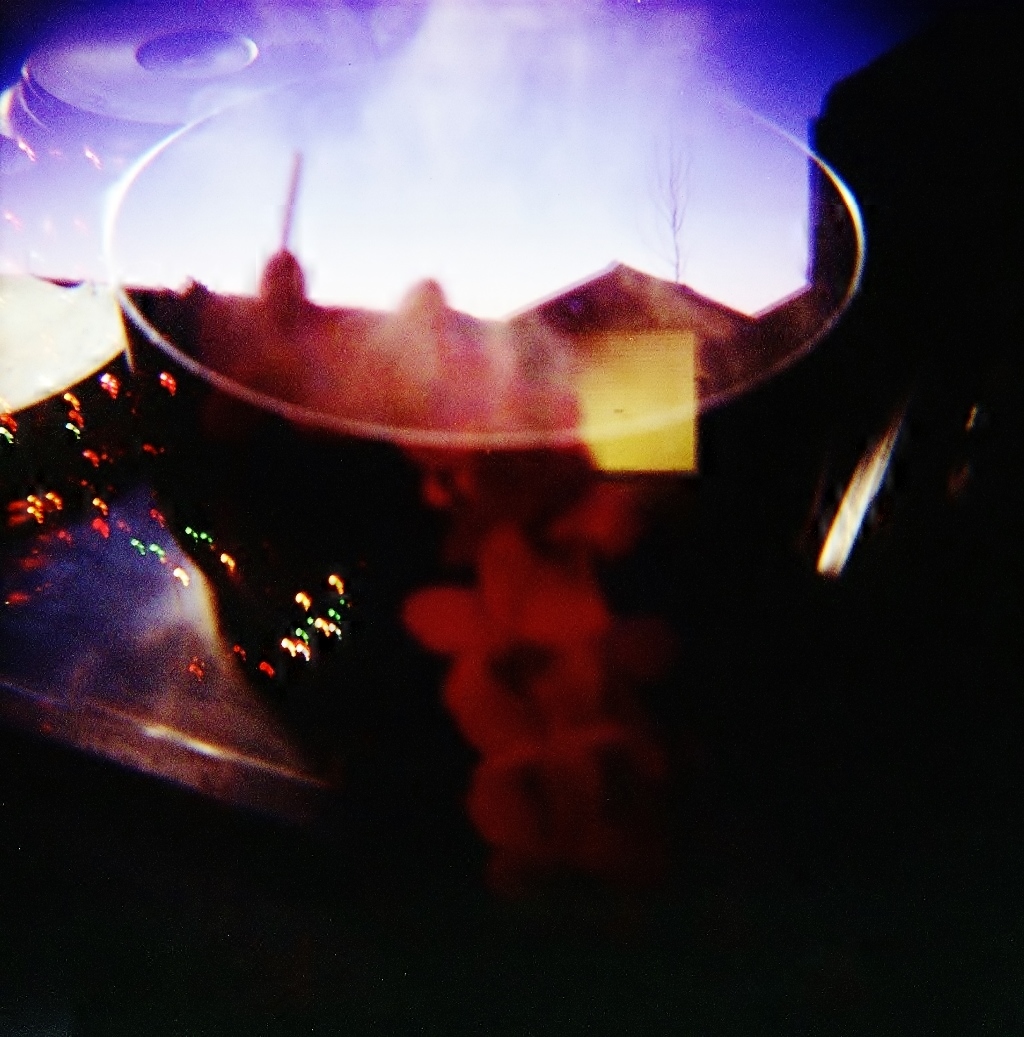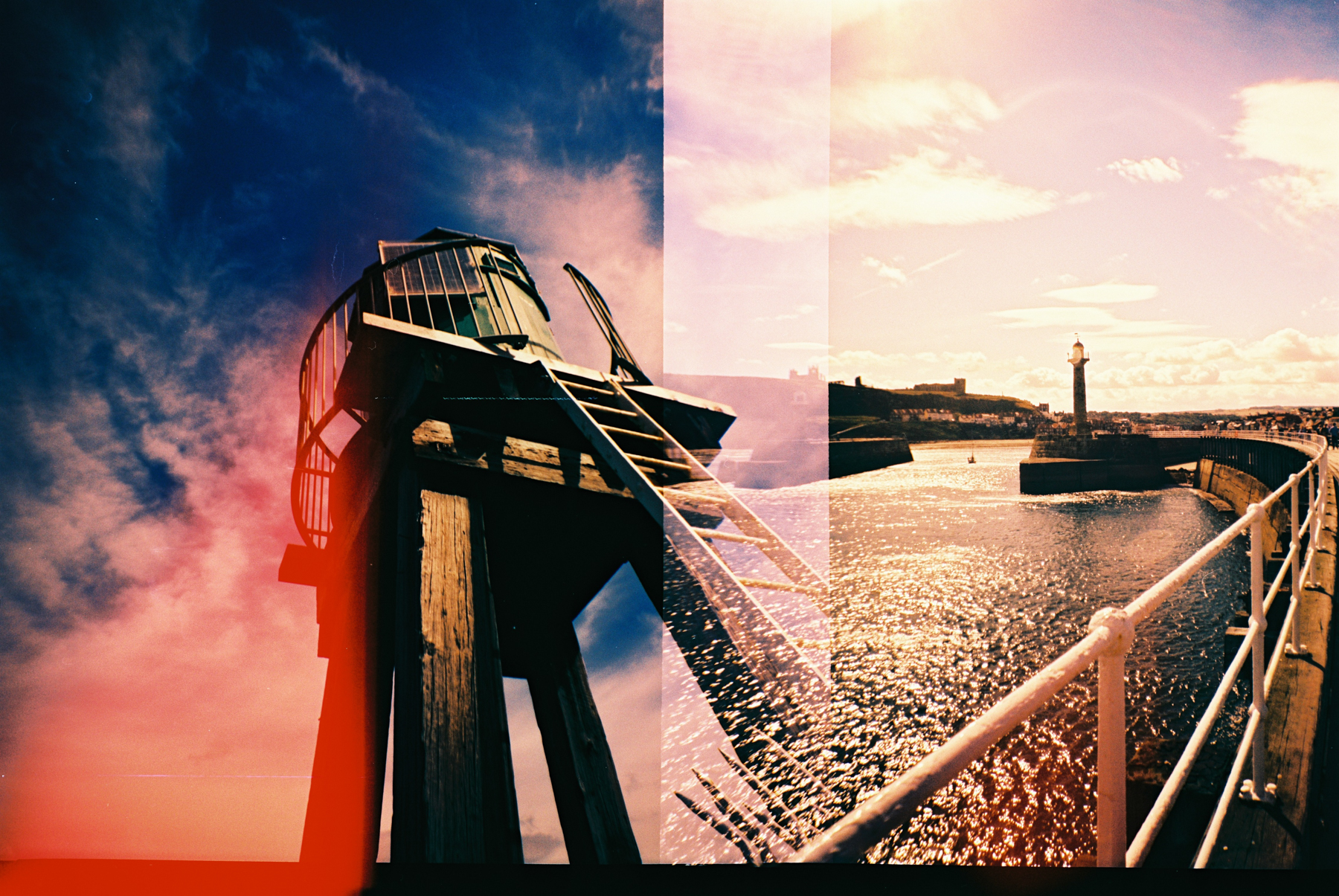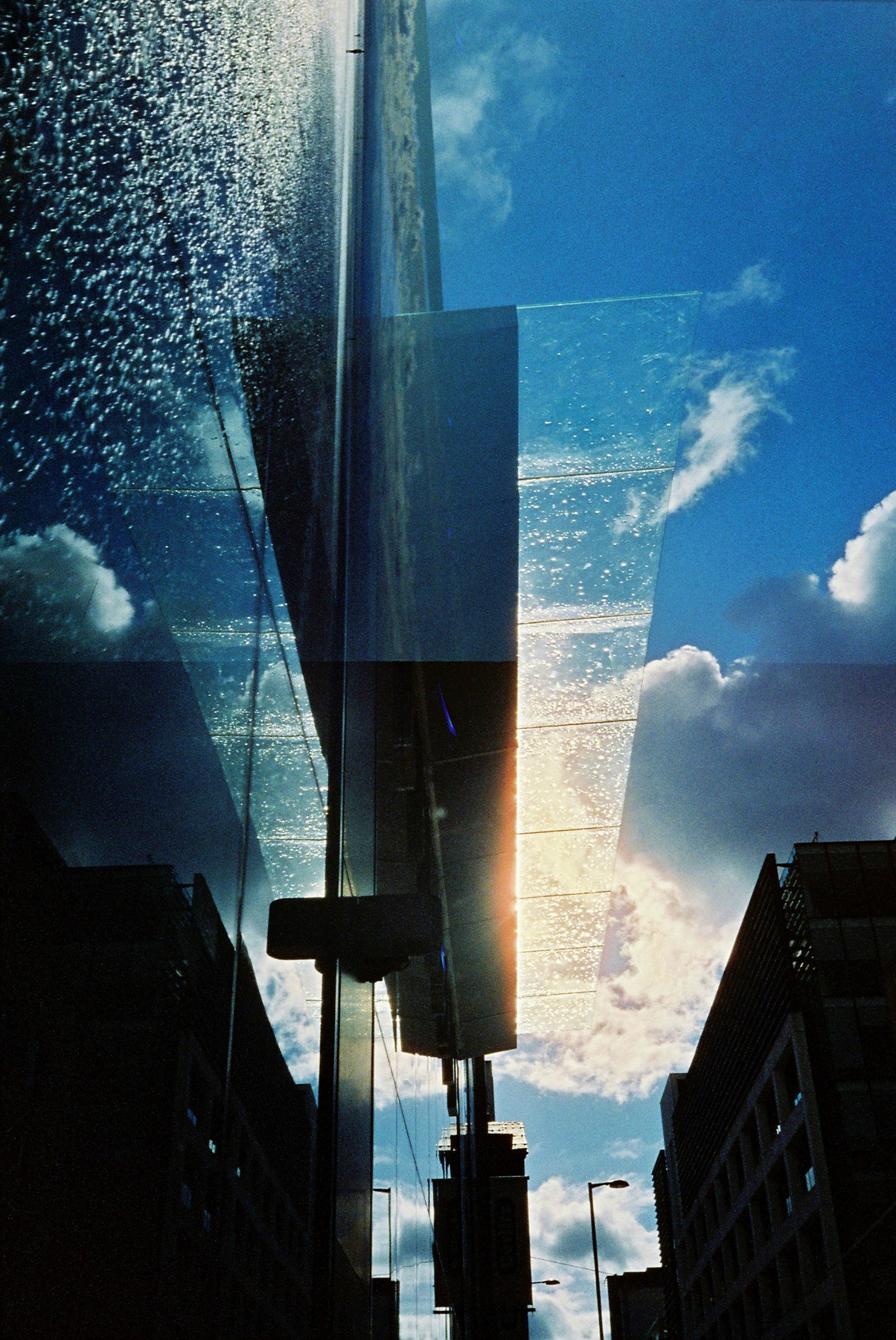Back in 2014 I was given a Diana F+ for Christmas and it changed my life forever. At that time, I barely knew that film was still a thing. I definitely didn't know that medium format film was still a thing. I knew none of the principles of photography, nothing at all about the elegant relationship between aperture, shutter speed and ISO.
Back then it seemed to me that photography didn't actually have any rules, which meant that everything I did felt experimental and inventive, and this feeling of excitement and adventure, even coming as it did out of great ignorance, has never gone away, even now that I have a far better knowledge of the principles, techniques and chemistry I work with. While there were errors, there was also good luck, and fun; really huge fun
From the very beginning of shooting I was moving the camera around, doing long exposures, double and triple exposures, including partially overlapping exposures. It's easy in the Diana to do multiples as you go along, and even then I was dimly aware that if using 400 iso film was likely to give you one well exposed picture on a frame, then using 100 iso film would mean you could shoehorn two or three on the same frame without too much difficulty and without changing the 'weather setting' very much. I started out using Lomography colour films which have a pleasing brightness and saturation, whereas nowadays I'm more likely to use slide film and cross process it. Something about the surreality, or hyperreality, of double exposures works particularly well on AGFA Precisa or old Velvia.
Three months of playful guesswork yielded some really pleasing early experiments, but it also brought me to a place where I wanted to know more, do more, and be able to visualise more - basically to control more. I'd been looking at some very inspiring photography on Facebook and Flickr and simply wanted to be better. So in April 2015 I acquired a nice old Gossen Sixtino meter and got a little bit more scientific about everything. I also began to do double exposures collaboratively with other photographers whose work inspired and delighted me, and that was wonderful
The two images below came from international film swaps with Becky Ramotowski & Leo Lensen. My set of exposures were a little faint on mine and Becky's roll, but I was beyond pleased when her image of San Felipe de Neri in Albuquerque had my shadowy image of North Yorkshire's Whitby Abbey on it, simply by chance. Two lovely buildings constructed hundreds of years and thousands of miles apart, brought together by the wonderful randomness of a film swap! Something really magical happens sometimes, at the nexus of interesting technique and pure good fortune, and increasingly so as you deepen your understanding of your craft. As my beloved Grandmother used to say, "The better you are, the luckier you get".
Acquiring a dark bag gave me the ability to do double exposures in different places, shooting a base layer and top layer separately, and in very different locations, bringing together very different elements and associating or juxtaposing them, and sometimes giving the images a narrative quality which I appreciate. At the end of your roll you can roll right back to the beginning and start again, and make your pictures *more*.
Stepping into 35mm doubles from 120 was quite a plunge, and might not have happened at all if I hadn't totally inexplicably and absolutely accidentally (I still can't fathom it) taken the two shots above. The film was nice fresh AGFA Precisa, a great crosser, and the camera was my Olympus XA2. Almost the whole roll was doubled. The colour amazed me!
I don't presently have a 35mm camera that can do doubles as it goes along, (though I have seen a great hack for LC-As online and I'm planning to give that a go soon) so the roll has to be wound back and then started again. You want the frames to align in a pleasing way, and I think that a perfect or near perfect alignment, or a 1/3 to 2/3 alignment works well, but that a half and half alignment looks rather ugly. I made a hash of a lovely roll of Cinestill 800t that way, which was very sad. Often a roll of doubles has an inherent strikingness - a really powerful mixture of the pictorial and the narrative - that gives you a very high hit rate, but on that sad roll this was the one pretty shot
Double exposing is also a great way to get lots of light on expired, exhausted film, and can perk it up no end. Image #9 above was shot on twenty year old Kodak Vericolour that I think must have been stored in a metal box in someone's attic. I also have a tin of nearly knackered Ektachrome internegative film which was coming out very grey until I decided the best way to use it was not only to do doubles, but to shoot one set of exposures from the front and the second set of exposures from the back, as redscale images, to warm the whole thing up. And this *really* worked, look:
I've never had so much colour on a roll of film. These images have had almost nothing done to them in post barring a slight crop here and there. They just were this bright, and that made me very happy. One of the things I know about myself is that my pictures are all about the colour, and the more colour there is the better I like them.
Shoot doubles, shoot multiples, share your films, send them round the world! Give them lots of light. Shoot them front to back and back to front. The possibilities are endless, and so is the fun!
Connect
Lucy Wainwright is a trainee art therapist. She likes rum, folk music, statuary, philosophy, tea, secrets, flowers, ruins, signposts, looking, serious literature, graphic novels, pickled fish, empty notebooks, and film. She has two awesome children and is happiest on the beach. See more of her work on her Flickr and Instagram.














